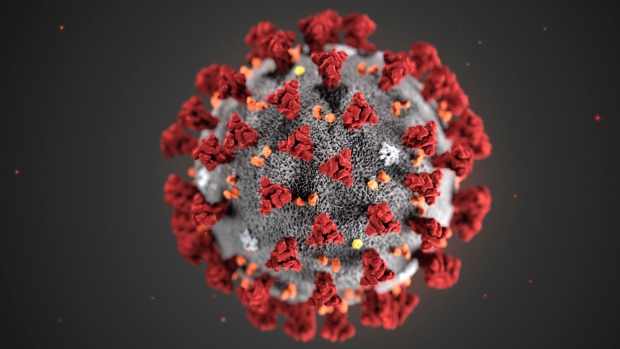Covid-19: Chloroquine, Zinc and Quercetin
Peter D'Adamo
Chloroquine is a malarial drug first discovered in 1934. It’s still in use for malaria management, although the most common species of malaria-causing organisms are long resistant to it. Hydroxychloroquine (Plaquenil) also has anti-malarial activity, but is much more commonly used to treat certain auto-immune disorders, including rheumatoid arthritis, and systemic lupus erythematosus. Both of these drugs are structurally related to quinine, the famous ‘Jesuit Bark’ (
Chinchona spp.) that was the first effective treatment for malaria (and the chemical that gives tonic water its unique flavor). Both pharmaceuticals are long out of patent protection, so generic versions are widely available. Depending on locale, a typical month-long treatment with hydroxychloroquine in the developing world was about US $4.65. Both drugs are on the World Health Organization’s List of Essential Medicines.
All quinine-analog drugs have the potential for side effects. Some are mild (diarrhea, nausea, tinnitus) others can be quite serious (inflammation of the retina, anemia, cardiac instability). Chloroquine and hydroxychloroquine preferentially collect in the lungs, which helps increase potency with smaller doses. However, part of risk is due to the medications also collecting more in cells with melanin, which include skin and eye cells. Damage to the eyes can be a risk with large doses or extended use as a malaria or autoimmune disease treatment. People with cardiac problems may also be more at risk of adverse cardiac reactions. There is also a significant risk of interactions with other medications when taken simultaneously. Because of this, both chloroquine and hydroxychloroquine are available only by prescription.
Chloroquine and hydroxychloroquine have an extensive research basis as antivirals. There are two acknowledged mechanisms by which these drugs exert antiviral effects.
Mechanism I: Endosome Alkalinizer
The process of viral entry involves the transport of the viral genome across host cell membranes, and the subsequent release of the virus genome into the host cell’s body (cytoplasm). Enveloped viruses like SARS-CoV-2 accomplish the delivery of their genomes into the cytoplasm of the host cells by binding to surface molecules on the outer membrane of susceptible cells, and fusing their outer envelopes with host cell membranes.
This leads to the virus being internalized into bubble-like (vesicle) inclusions known as
endosomes.
In order to initiate replication, the virus requires that the endosome have a low (acidic) pH. Both drugs are weak bases (alkaline pH) and are rapidly taken up into the endosome,
where they raise the pH to a point where viral replication can’t take place.The virus is therefore unable to release its genetic material into the cell and replicate.
 Inhibition of viral infection with the increase pH by chloroquine analogs. Steps: 1. Endosome formation; 2. Fusion; 3. Post-translational modification; 4. Uncoating of the virus. ‘X’ marks points in process where chloroquine/ hydroxychloroquine exerts viral blocking effect. (simplified, from Al‐Bari 2017)
Mechanism II: Zinc Transporter
Inhibition of viral infection with the increase pH by chloroquine analogs. Steps: 1. Endosome formation; 2. Fusion; 3. Post-translational modification; 4. Uncoating of the virus. ‘X’ marks points in process where chloroquine/ hydroxychloroquine exerts viral blocking effect. (simplified, from Al‐Bari 2017)
Mechanism II: Zinc Transporter
The mineral zinc is involved in many different cellular processes, and has proven crucial for the proper protein folding, the activity of various cellular enzymes, and most genetic transcription factors.
In solutions such as water, zinc exists in its ionic form (Zn2+), where it possesses two extra electrons that it doesn’t need, and would like very much to give away. This ionic aspect is what makes zinc so interesting from an antiviral perspective.
Ironically, even though zinc performs so many critical functions, the cell is not terribly interested in accumulating high levels of it.
The intracellular concentration of free Zn2+ is maintained at a relatively low level by
metallothioneins, small molecules that bind metals like zinc, copper and other heavy metals. The cell aggressively throttles Zn2+ because, at elevated concentrations, it can serve as an intracellular signal molecule, and trigger cell suicide (apoptosis), or even block protein synthesis. If that wasn’t enough discouragement, the cell membrane itself tends to repel zinc ions from binding, in much the same way that two magnets will repel each other when the same poles are brought close together.
Zinc is a decidedly anti-viral mineral. High intracellular concentrations inhibit the replication of RNA type viruses, such as SARS-CoV-2. Zinc does this by blocking RNA-dependent RNA polymerase (RdRp), the core enzyme of their multiprotein replication and transcription complex that is critical for the copying of viral RNA.
That’s the conundrum.
In high concentrations, zinc can block coronavirus reproduction, but the cell is typically disinclined to tolerate high levels of zinc due to concerns about its other actions.
Enter the
zinc ionophores.
Fortunately, there are molecules that can act as facilitators and enhance the entry of zinc into the cell. These are known as zinc ionophores, and here’s the payoff: in addition to its effects on endosome pH,
chloroquine has also been demonstrated to be a zinc ionophore.
But there’s even more to the story. In addition to chloroquine,
the nutraceuticals quercetin (bioflavonoid) and epigallocatechin-gallate (green tea polyphenol) are also zinc ionophores. Quercetin plus zinc is being tested as an anti-viral in human clinical trials for the treatment of Covid-19. The combination had already made it through animal trials for use against Ebola and SARS-CoV1, and was approved by the FDA for human clinical trials. Plans are underway for a large scale trial in China for patients with Covid-19.
The anti-parasitic drug ivermectin appears to have ionophore activity,
as does the antioxidant resveratol.
 How zinc ionophores work. 1. Zinc ions (blue hexagons) are in solution outside the cell. 2. The cell’s membrane and binding molecules limit the ability of zinc to penetrate into the cell cytoplasm via special ports (light green shape). 3. A zinc ionophore (red triangle) activates the port (dark green shape) to allow zinc to enter cell (4). Now in the cell, zinc is then able to block the enzyme RNA-dependent RNA polymerase (black shape), which turns off viral replication.
How zinc ionophores work. 1. Zinc ions (blue hexagons) are in solution outside the cell. 2. The cell’s membrane and binding molecules limit the ability of zinc to penetrate into the cell cytoplasm via special ports (light green shape). 3. A zinc ionophore (red triangle) activates the port (dark green shape) to allow zinc to enter cell (4). Now in the cell, zinc is then able to block the enzyme RNA-dependent RNA polymerase (black shape), which turns off viral replication.
Getting zinc into the cell is obviously dependent on having adequate levels of zinc outside the cell. With most of us, this is usually not a problem. However, zinc absorption does vary by individual.
Physiological stressors, such as infection and inflammation, tend to deplete zinc pretty fast. Fortunately, most of the hospitals that are empirically prescribing chloroquine for active Covid-19 are also supplementing with zinc as well.









